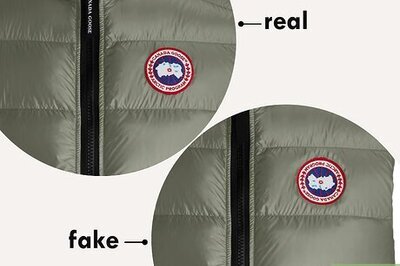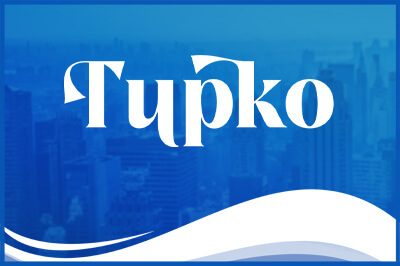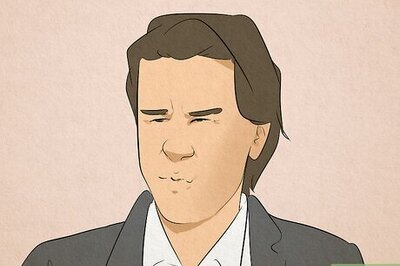
views
Types of Facials & Their Benefits
Classic Facial Also known as a “deep cleansing facial,” “glow facial,” or “hydrating facial,” classic facial focuses on exfoliating dead skin and hydrating the top layers of skin. This treatment is non-invasive and can be tailored to any skin type. The goal is to leave the skin refreshed and rejuvenated so it appears plumper and brighter. While the effects are temporary, a classic facial can help the skin feel cleansed and fresh. Best for all skin types Uses topical products to exfoliate and moisturize the skin Benefits: Temporarily smooth and hydrated skin Cost: $50 to $100 Warning: Dr. Karhade advises to “ensure your skin is free of inflammation or acne breakouts, as facials can worsen these.” Meet the wikiHow Experts Kaveri Karhade, MD is a Board Certified Dermatologist based in San Francisco, California who specializes in acne and hair loss. Alicia Ramos is a Skincare Professional and Licensed Esthetician trained in dermaplaning, microdermabrasion, and chemical peels.
LED Light Therapy Facial A light emitting diode (LED) facial uses visible light wavelengths to treat the skin. Studies have shown that certain light frequencies can visibly repair or rejuvenate the skin. For instance, red light is believed to stimulate collagen to reduce fine lines and wrinkles. In a light therapy facial, the esthetician will place an LED device over your skin, targeting problem areas. The effects of this facial are long-lasting when completed frequently and are best for those with scarring or wrinkles. Best for reducing wrinkles and fine lines, treating acne, and reducing inflammation Uses LED light to painlessly smooth the skin and reduce redness and inflammation Benefits: Reduces redness and inflammation while targeting fine lines and scarring Cost: $25 to $200 Warning: LED light therapy should not be done on those taking medications that increase their sensitivity to sunlight or have a family history of skin cancer. At-home LED masks are available to purchase, but they may not be as effective as getting a professional facial treatment.
Hydrafacial A hydrafacial is a relatively new facial treatment that’s designed to treat clogged pores and dry skin. The treatment is broken down into three steps: cleansing and exfoliation, extraction (suctioning out debris from pores), and moisturization. For this non-invasive treatment, an esthetician will use a wand to “vacuum” and deep cleanse the face. People report seeing a physical difference in their skin up to 5 to 7 days after treatment. Best for all skin types Uses a patented wand to cleanse, exfoliate, extract, and hydrate the skin Benefits: Hydrates and cleanses the skin Cost: $150 to $350
Chemical Peel A chemical peel treatment is designed to exfoliate the skin to remove dead skin cells for smoother and brighter skin. Essentially, the peel removes layers of the skin to reveal more youthful-looking skin. There are many types of chemical peels, each ranging in intensity. For this facial treatment, an esthetician will cleanse the skin and apply a chemical solution. A hot or stinging sensation may be felt depending on the strength of the peel. Afterward, the skin may appear red or sunburnt, but after a day or two, the skin will begin to peel, revealing smoother skin underneath. Best for those with fine lines, acne, mild scarring, rough skin, or discoloration Uses strong chemicals to penetrate layers of skin Benefits: Smoother, tighter skin Cost: $100 to $300 Warning: Chemical peels may create discoloration on darker skin tones and are also not advised for those who have skin conditions or spend a lot of time in the sun.
Microneedling Microneedling is a facial treatment that uses small needles to promote collagen. The small needles are worked over the skin to tighten problem areas and reduce pigmentation and acne scars. Poking holes in the top layer of skin promotes the skin’s healing process to help firm and smooth the skin. Numbing cream is often applied to the skin before treatment to minimize discomfort. If done regularly, the effects of microneedling can be long-lasting. Best for those wanting to tighten the skin or reduce pigmentation or scarring Uses small needles to promote collagen growth Benefits: Tightens skin, reduces fine lines, and minimizes pigmentation Cost: $200 to $800 Warning: Avoid microneedling if you have acne, a blood disorder, eczema or psoriasis, or are receiving chemotherapy.What is collagen? Collagen provides structure, strength, and support for your skin. In other words, it’s what makes your skin firm, tight, and elastic.
Microdermabrasion Ramos explains that “microdermabrasion is the process of removing the outer layer of the skin, exposing a fresh layer and prompting the body’s natural regenerative process.” The treatment is minimally invasive and “polishes the skin to help with acne scars, uneven tone, hyperpigmentation, and wrinkles.” For this facial treatment, a dermatologist uses a special instrument to exfoliate or sand away the top layer of skin to promote cell and collagen growth. Microdermabrasion typically takes 30 to 40 minutes to perform, and while the skin may be swollen and red for 24 hours afterward, skin can appear smoother for up to a month after treatment. Best for those with unwanted fine lines, large pores, or discoloration Uses exfoliation to remove the uppermost layer of skin Benefits: Reduces the appearance of age spots, sun spots, pores, fine lines, and scars Cost: $120 to $400 Warning: Avoid microdermabrasion if you have acne, eczema, or psoriasis. While at-home microdermabrasion kits are available, it’s best to visit a licensed dermatologist for this procedure.
Silk Peel Facial A silk peel facial is a non-invasive treatment that exfoliates and hydrates the skin. With this treatment, a diamond-tip wand is used to remove dead skin cells using a microdermabrasion technique. Then, a serum is infused into the skin to target problem areas. Silk peel facials are recommended for all skin types and can be tailored with serums for almost every ailment. Best for all skin types Uses a medical-grade diamond exfoliator and customizable serum Benefits: Skin plumping, anti-aging, and hydration Cost: $100 to $450
IPL Photofacial An intense pulsed light (IPL) facial uses light to treat discoloration of the skin. This treatment is primarily reserved for those with sun damage, unwanted freckles or birthmarks, or broken blood vessels. The light breaks through the top layer of skin to eliminate cells causing discoloration, targeting melanin and hemoglobin to repair the skin. A treatment lasts 15 to 30 minutes and is typically done every 2 to 4 weeks. To maintain results, it’s recommended to get a treatment every year after the initial procedures. Best for removing unwanted pigmentation Uses light therapy to penetrate the skin and remove and promote cell growth Benefits: Skin rejuvenation to reduce the appearance of sun damage, age spots, redness, or other discolorations Cost: $300 to $600 Warning: IPL photofacial treatments should not be done on those with active skin infections, who have significant scarring, who have recently tanned, or who are pregnant.
Microcurrent Facial Also known as a firming or sculpting facial, a microcurrent facial uses facial massage and radiofrequency to tighten and lift the skin. A low-grade electrical current is used to help stimulate the facial muscles, and when paired with a soothing massage, it’s believed to help sculpt the face. With regular treatments, the results can be long-lasting for visibly firmer and contoured skin. Best for those wanting tighter skin and a more contoured face Uses low-grade electrical currents and facial massage Benefits: Tighter skin, lifted brows, contoured cheeks Cost: $250 to $500 Warning: Do not get a microcurrent facial if you have heart issues or a pacemaker.
Dermaplaning Dermaplaning is a facial treatment where dead skin cells and “peach fuzz” are gently scraped away to reveal brighter, smoother skin. This treatment is minimally invasive and used to reduce the appearance of acne scars and other imperfections. Dermaplaning is also a common way of hair removal; however, it is only a temporary fix as the hair grows back. Best for those with acne scars, dry skin, or soft facial hair Uses a small scalpel or razor to remove dead skin cells and facial hair Benefits: Reduces the appearance of acne scars, removes dry skin and peach fuzz Cost: $75 to $250 Warning: Those with eczema, psoriasis, and an active case of acne should avoid dermaplaning, as it can worsen symptoms.
Vampire Facial Also known as a platelet-rich plasma (PRP) facial, a vampire facial uses your blood to rejuvenate the skin. Before treatment, a small amount of blood is collected and processed to isolate platelet-rich plasma. Then, the blood is applied all over the face using microneedling (a numbing cream may be applied to reduce pain). This skincare treatment is believed to help reduce fine lines and scars while improving the skin’s overall texture, tone, and elasticity. Results can last up to 18 months, with only minor swelling and redness within the first few days. Best for those looking for an anti-aging treatment Uses a client’s blood and microneedling to plump the skin Benefits: Reduces fine lines, wrinkles, and acne scars Cost: $250 to $1,500 Warning: There’s a high risk of infection with vampire facials, as the blood must be handled sterily and safely.
What type of facial should you get?
Get a facial that targets your skin’s needs. The best facial for you targets what your skin needs most. Determine the ultimate goal for your facial: What does your skin crave? Are there any imperfections you’re self-conscious about? Are you looking for anti-aging benefits or improved skin texture? Knowing this can help you decide which facial is best for you. Here’s a quick guide to help: If you have dry or flaky skin, opt for a classic facial, dermaplaning, or a hydrafacial. If you have age spots or fine lines, go for LED light therapy, microdermabrasion, or a microcurrent facial. If you have acne scars, try microneedling or a chemical peel. If you’re unsure which facial best fits your skincare needs, talk to your dermatologist for guidance.
Can you do facials at home?
Yes, you can do a facial from the comfort of home! Salon facials can get pricey, and you can replicate many of the products and benefits from home. While experts do advise getting more intense facial procedures done by a professional, doing a simple hydrating or exfoliating treatment with drugstore products is a breeze. Here are some tips and ideas for doing an at-home facial: Cleanse your skin before starting. Before you do any type of treatment, make sure to wash your face thoroughly. Steam your face to open your pores and add moisture. This can be done by placing your face over a bowl of hot water or putting a warm towel on your face. Exfoliate to remove dead skin cells. Use a chemical or physical exfoliating product to gently scrub away imperfections. Put on a face mask to rejuvenate the skin. There are tons of face masks to try! Opt for one that advertises your skin needs, whether that’s hydrating, tightening, or clarifying. Skip doing extractions. For an at-home facial, experts advise against popping pimples or blackheads. It’s best to leave that to the professionals.
How often should you get a facial?
How often you get a facial depends on your skin type and the type of facial. The frequency of your facials really depends on what you’re treating. Experts recommend waiting 4 to 6 weeks between facials, as this aligns with your skin’s natural cycle. However, each facial treatment is different, with some requiring a more intensive schedule at the beginning. It’s best to talk to your healthcare provider or esthetician before starting a facial treatment to ensure you can maintain the routine physically and financially. Keep in mind that the results of a facial are always temporary unless you maintain them. Many facial lovers opt for at-home facials because of this. At-home facials are typically easier to maintain and cost a lot less.
What are the benefits of facials?
Facials promote overall skin health while rejuvenating the skin. There are many benefits to getting a facial, and depending on the type of facial you get, you can receive one or all benefits. Facials have been proven to help minimize the size of pores, lessen oil production, and balance the skin’s pH. Along with all of this, facials can also: Deeply cleanse your skin. Most facials aim to remove dirt, oil, and impurities from the pores and skin. Exfoliate your skin. Removing dead skin cells reveals smoother, brighter skin. Hydrate your skin. Many facials pride themselves on bringing moisture back into the skin to reduce the appearance of fine lines and improve overall texture. Enhance your skin tone and texture. Facials that incorporate lights or lasers are said to improve discoloration and uneven skin texture. Be relaxing. At the end of the day, getting a facial just feels good—it’s a common form of self-care.
What is the best type of facial?
The best type of facial targets your individual needs. Everyone’s skin is different; therefore, everyone’s facial needs and preferences are different. The best type of facial isn’t singular—it depends on what the client needs most. Talk to your doctor or esthetician to see which facial would best suit your skin.

















Comments
0 comment